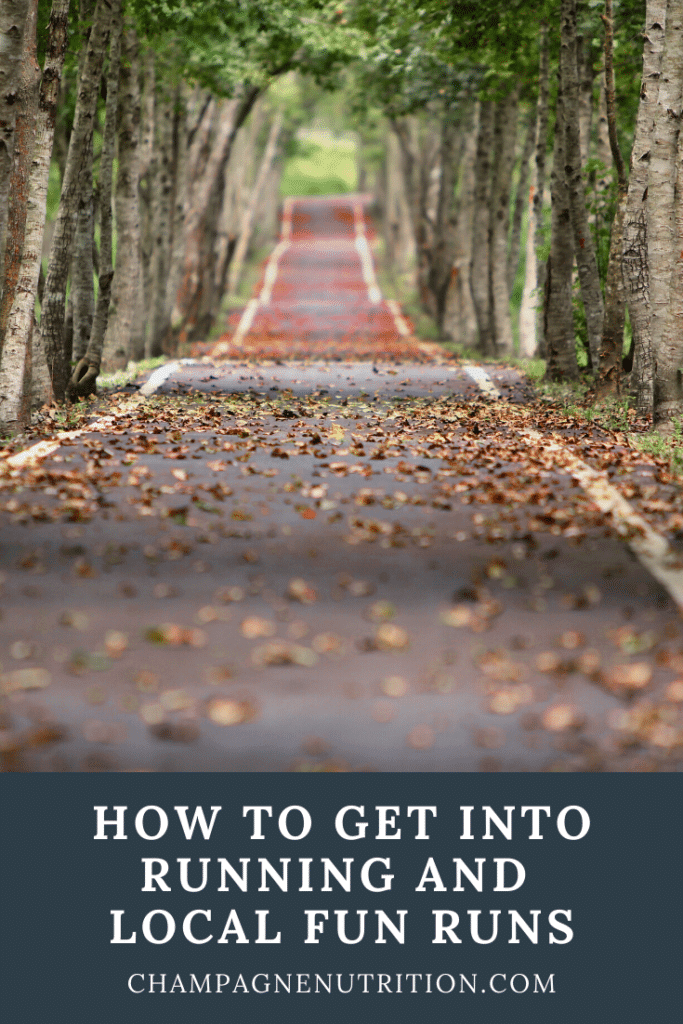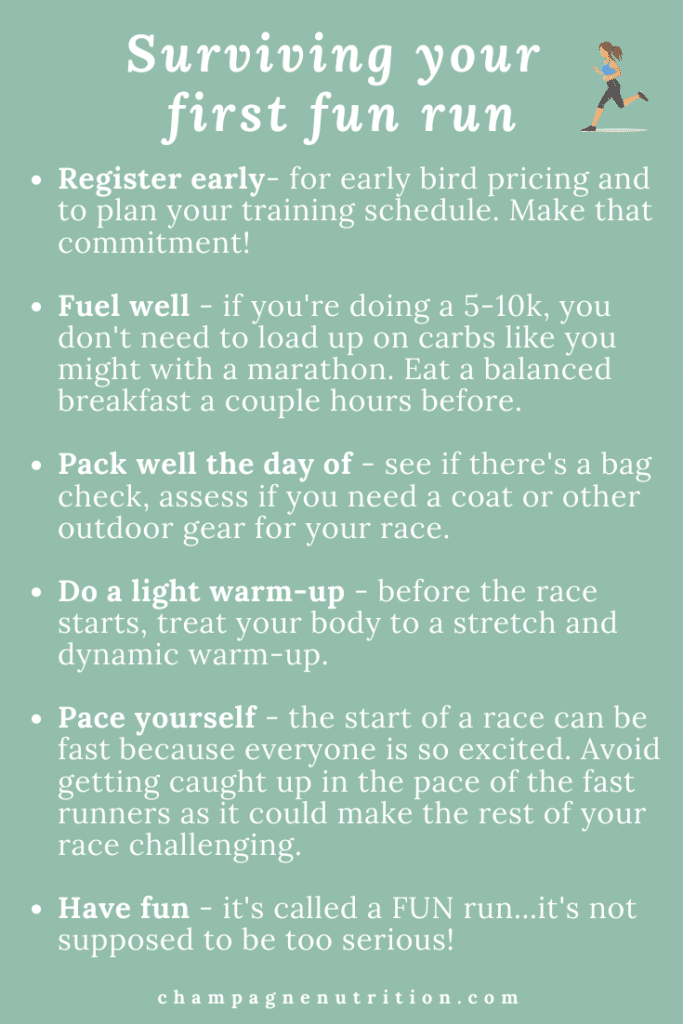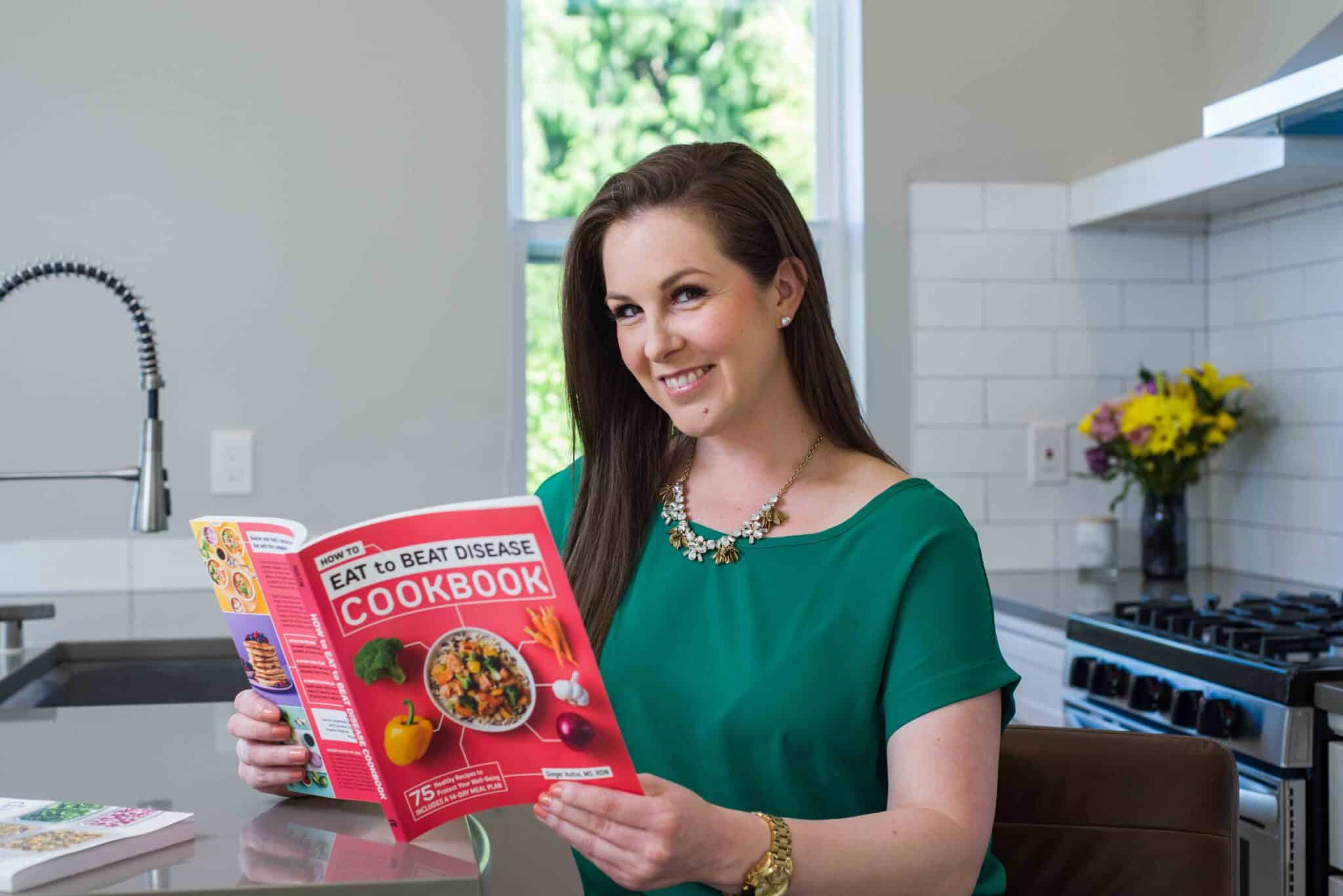How to Get into Running and Local Fun Runs
May 1, 2015 by Ginger Hultin MS RDN
Let me start out by saying I am not a runner. Getting outside to run in Seattle sounds appealing about five times a year and it’s definitely in early summer when the weather is gorgeous. I live by the lake where there are awesome trails to go running and I do see people running year round (even on the rare occasion that we get snow here). I love seeing the passion some people have for running, including many of my clients, but I hadn’t picked it up myself…until I tried my first FUN run a few years ago and I was hooked! So I am sharing how to get into running and local fun runs to get you started because I believe that almost anyone could have fun running this way.
Benefits of Running
Running has many health benefits. It’s a form of aerobic exercise when done at a low to moderate intensity. Aerobic exercise means that the body is using oxygen to support your muscles. Since the body uses oxygen, the activity is sustainable for longer periods of time (unlike a sprint). Aerobic exercise has benefits for your heart and can strengthen your heart to become more efficient at pumping blood throughout the body. The sweet spot for this heart health benefit is to hit 20 minutes of aerobic exercise in a session and ideally on most days of the week. Other health benefits include decreasing risk for heart disease, lowering blood pressure, increasing our good cholesterol (HDL), promote better control of blood sugar, supporting weight management, improving lung function, and decreasing resting heart rate.
Let’s not forget about that runner’s high. If you’ve experienced a ‘runner’s high’ you know what I’m talking about; it’s a rush of feel-good hormones called endorphins that get released with this type of exercise. It’s a real thing and definitely the reason people get “addicted” to running. Now that you know the benefits, are you ready to learn how to get into running and local fun runs?

How to Get Into Running
One of the best things about running is that you don’t really need any equipment and no monthly gym fees. You do need to have a good pair of running shoes with support . If you have flat or really high arches I also recommend getting specially fitted by professionals. If you need help with picking out a running shoe, find a running store in your area; the people there are super helpful (and runners) who can set you up with a good pair. You’ll be so much happier if you start this way.
Other equipment worth investing in are some simple items to keep you safe and happy. If you live in a rainy place like me, a running raincoat is critical. If you may run in the dark, make sure to get some lights or reflective gear for protection. Make sure that you’ve got a cute, comfortable outfit that you look forward to putting on. No shirts with holes in them, old sports bras or pants that don’t fit right.
There is a huge community (all across the country) of runners and events from fun runs, running meetups, running clubs, and facebook groups. That has always been one reason I consider myself a non-runner, I love the community at my gym, so I was excited to learn that there is a running community and you don’t have to go run laps at the track solo.
To get started with the actual running part of things, I recommend signing up for a race or fun run (more on finding the right race below) to motivate yourself. Once you’re signed up – and give yourself adequate time to train, especially if you’re a beginner – look for a running plan online. There are tons of running plans for all levels, including from couch to 5ks. A good rule of thumb if you are newbie is running for 1 minute then walking for 1 minute. Then gradually progress. Run for 2 minutes then walk 1 minute, 3 minutes then 1 minutes…you get the picture. You’ll be running a 5k before you know it.
Cross-Training
If you’re a non-runner like me, then this section is for you. You can totally participate in fun runs and be a non-runner by cross-training. Hello ellipticals and stationary bikes! This might look like running just 1-2 days a week and then taking a spin class or HIIT class on two other days of the week. It’s actually a really nice way to mix-up your workout routine (and the national recommendations are to get a mix of aerobic and anaerobic exercise anyways). Stretching is an extremely important part of running. A lot of runners get tight hips because of always exercising in one plane of motion. This is where a yoga class can be really beneficial to balance things out.

Finding a Local Fun Run and Tips
The first fun run I ever did was in Chicago. It was so fun to be in a huge crowd with music and drinks at the end. There are a lot of fun runs in Seattle year-round and many of them raise money for different causes. I’m considering doing a few different ones this next year and I just check up on them every month or so for inspiration. I went to the University of Washington for my undergrad and the Dawg Dash is always fun in the fall before the weather gets too cold. Below are my tips to help you prep for your next fun run.
- Register ahead of time – often races allow you to register the day of. If the race is really big, trying to get a bib number can be chaotic on the day of. The sooner you can register the better, as they often off early bird pricing. You can also set up your training schedule for motivation leading up to the race.
- Eat breakfast before – if you’re doing a 5-10k, you don’t need to load up on carbohydrates as you might with a half-marathon or marathon. Think about eating a carbohydrate based breakfast but in an appropriate portion. Limit fat and protein in your breakfast as this can take a long time to digest and cause digestive discomfort as you run. I recommend eating 2 hours before you race to give yourself time to digest. Think about 1/2 cup oatmeal with blueberries and cinnamon or a bagel with a light layer of nut butter. Learn more about fueling here.
- Find out if they offer a bag check ahead of time – most races do! If you’re running in the winter you probably want to pack a coat before the race starts. A coat check is somewhere you can safely keep your items while you are running.
- Do a light warm-up before the race starts. No that doesn’t mean a full on run; but some light stretching or dynamic warm-up.
- Pace yourself – normally the start of a race is really fast because everyone is excited to get moving. Avoid getting too caught up in the pace of the fast runners as it makes the rest of the race challenging (trust me).
- Have fun! Okay, remember, it’s called a FUN run…it’s not supposed to be too serious!
I’m not a runner but I am all about making fitness fun and participating in these races can be a great way to be more active on the weekends with some added incentive depending on the theme of the race. Intimidated by running? No worries – first off, you can walk if you want as a start and secondly, there are a lot of simple training programs you can start today! Work with a local fitness expert for safety as you get started. Like I said, cross-training can give you a surprising advantage, as can participating in other endurance sports like cycling as well as training your core – see tips on that here.
What are your favorite races? I’d love to hear from you.

Ginger Hultin,MS, RD, CSO
Thanks for visiting! If you're struggling with a cancer diagnosis, autoimmune condition, gut health problems, or even a medical mystery, nutrition can make a HUGE difference in your day-to-day life. I run a virtual, concierge private practice where I partner with my clients over time to help them improve their health through nutrition. Be sure to visit the blog for easy, plant-based, anti-inflammatory recipes and our "Resources" page for a variety of self-paced programs, books, e-books, and nutrition podcast episodes.
